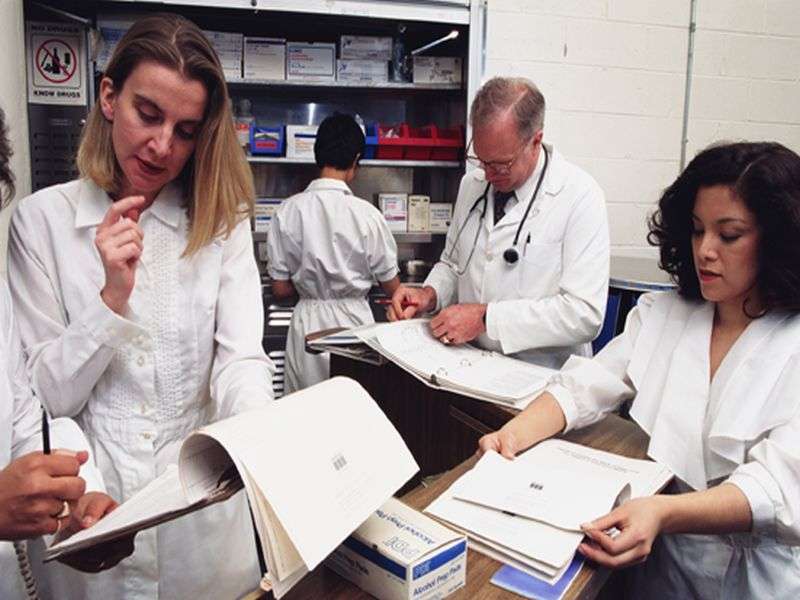More health care workers need flu shots: CDC

(HealthDay)—More U.S. health care workers need to get their annual flu shots, a new government report shows.
Roughly one in every five American health care workers skips the yearly vaccination, and in some facilities that number exceeds half, according to the report from the U.S. Centers for Disease Control and Prevention.
"We owe it to our patients, as well as to other health care providers, to be vaccinated," said Dr. Robert Glatter, an emergency physician at Lenox Hill Hospital in New York City.
"This is one of the most important ways to prevent transmission of influenza, not only in the hospital but also in other health care settings," said Glatter, who was not involved with the new study.
Getting a flu shot can lower the odds of patients contracting the flu from doctors, nurses and others, and reduce flu-related complications and deaths among health care workers and their patients, the authors of the CDC report said.
That might be even more important this coming flu season, as CDC officials said Thursday that vaccination coverage declined 1.5 percent across the entire U.S. population during the 2015-2016 season, with only 46 percent of Americans receiving the annual vaccine.
To assess recent rates of flu vaccinations in the health care community, Carla Black, an epidemiologist at the CDC's National Center for Immunization and Respiratory Diseases, and her team analyzed data from the last two flu seasons.
In the 2015-2016 flu season, 79 percent of all health care workers reported being vaccinated, which was similar to the 77 percent who said they got flu shots in the 2014-2015 flu season.
Health care personnel who worked in hospitals were most likely to be vaccinated (91 percent), compared with people who worked in clinics (80 percent) and those employed in nursing homes and long-term care facilities (69 percent), the investigators found.
Despite having lower overall vaccine coverage, long-term care facilities were the only places where vaccination rates increased in 2015-2016—an increase of 5 percent, the researchers said.
Doctors continued to be more likely to get a flu shot (96 percent) than medical assistants and aides (64 percent). Vaccination rates dropped to 45 percent in health care facilities where vaccination wasn't required of employees, the findings showed.
The most effective way of ensuring that health care workers get vaccinated seems to be by making it a requirement, the researchers noted. The highest overall rates of vaccination were in facilities that mandate flu shots for workers (97 percent).
"When employers do not require vaccinations, the concern is that this could be a potential way in which transmission of flu can be significantly increased," Glatter said. "It's vital that employers encourage annual vaccination to reduce transmission of flu."
Unless there are religious or medical reasons to avoid a shot, "it's imperative that all people get vaccinated to protect the safety of patients and others," Glatter said.
To ensure health care workers are vaccinated, the CDC recommends educating employees about the benefits of vaccinations, promoting vaccinations and providing free vaccinations.
The report was published Sept. 30 in the CDC's Morbidity and Mortality Weekly Report.
More information: Visit the U.S. Department of Health and Human Services for more on the flu.
Copyright © 2016 HealthDay. All rights reserved.




















